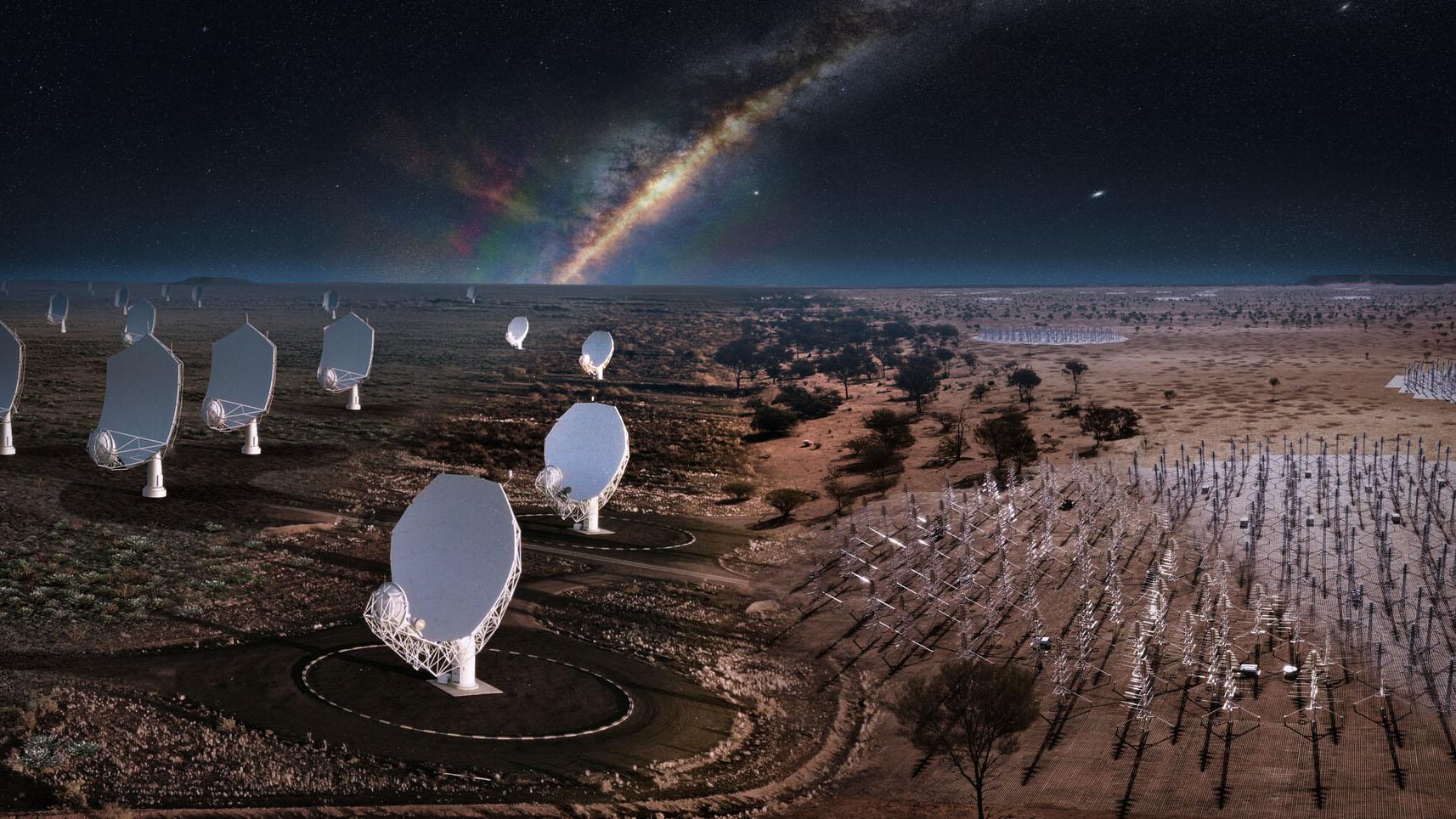Another eye in the sky, on the ground: India is now part of the world’s largest radio telescope project (Indian Express)

- 03 Jan 2024
Why is it in the News?
The Indian government’s recent approval to join the SKA project, accompanied by a financial commitment of Rs 1,250 crore, marks the initial step towards this ratification.
What is the Square Kilometre Array Observatory (SKAO)?
- SKAO is an intergovernmental organisation dedicated to radio astronomy and is headquartered in the UK.
- At the moment, organisations from ten countries are a part of the SKAO.
- These include Australia, Canada, China, India, Italy, New Zealand, South Africa, Sweden, the Netherlands and the UK.
What is significant about the SKA telescope?
- The telescope, proposed to be the largest radio telescope in the world, will be located in Africa and Australia whose operation, maintenance and construction will be overseen by SKAO.
- The completion is expected to take nearly a decade at a cost of over £1.8 billion.
- Some of the questions that scientists hope to address using this telescope include:
- Beginning of the universe
- How and when the first stars were born
- The life cycle of a galaxy
- Exploring the possibility of detecting technologically-active civilisations elsewhere in our galaxy and
- Understanding where gravitational waves come from.
- As per NASA, the telescope will accomplish its scientific goals by measuring neutral hydrogen over cosmic time, accurately timing the signals from pulsars in the Milky Way, and detecting millions of galaxies out to high redshifts.
- Significantly, the development of SKA will use the results of various surveys undertaken using another powerful telescope called the Australian Square Kilometre Array Pathfinder (ASKAP), which is developed and operated by the country’s science agency CSIRO.
- This telescope, which has been fully operational since February 2019 mapped over three million galaxies in a record 300 hours during its first all-sky survey.
- ASKAP surveys are designed to map the structure and evolution of the Universe, which it does by observing galaxies and the hydrogen gas that they contain.
What are radio telescopes?
- Unlike optical telescopes, radio telescopes can detect invisible gas and, therefore, they can reveal areas of space that may be obscured by cosmic dust.
- Significantly, since the first radio signals were detected by physicist Karl Jansky in the 1930s, astronomers have used radio telescopes to detect radio waves emitted by different objects in the universe and explore them.
- According to NASA, the field of radio astronomy evolved after World War II and became one of the most important tools for making astronomical observations.
- The Arecibo telescope in Puerto Rico, which was the second-largest single-dish radio telescope in the world, collapsed in December 2020.
- The telescope was built in 1963 and because of its powerful radar, scientists employed it to observe planets, asteroids and the ionosphere, making several discoveries over the decades, including finding prebiotic molecules in distant galaxies, the first exoplanets, and the first millisecond pulsar.
